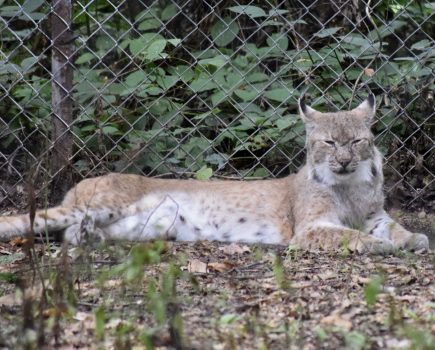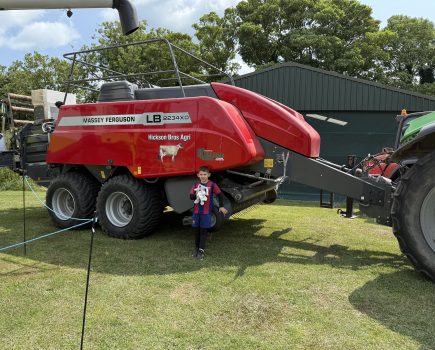Looking through a current dairying magazine brought things flooding back, memories of the good days in dairying and rather too many of the others! Reminders of the reasons I finally took the exit route and sold the whole herd.
It is all fast slipping into the distance now. The best times, during my involvement with milkers between the mid-1950s and the mid-2010s, were probably the years in which milk quotas were being developed, enabling established producers to earn good money to compensate for our rising costs and lousy milk prices.
Quotas gave many of us the chance to enjoy the job and only became spoiled by the complete shambles which DEFRA made of all aspects of TB, something which is only now showing signs of improvement, with research progressing on vaccinations. Their performance in administering the testing was the reason I referred to them as ‘Deathra’.
Their staff were seemingly never happier than when they could slap slaughter notices on farmers and basically disrupt farm businesses. Now my old girls are away together as a complete herd in Northern Ireland, we don’t have sleepless nights worrying about tomorrow’s test or what steps we will take if we get a failure. I had several, often with doubtful accuracy because the testing was pretty hit and miss.
Then there was the upheaval after the Milk Marketing Board was shut down by Mrs Thatcher’s government in the early nineties and we all had to make our own way, either in local groups or by putting some faith in National co-ops. We formed a comfortable group, based mainly on Sussex and Kent, which ran well for a short time until the economic pressure threatened small buying groups and we split up and went our own ways.
In my case we fell into bed with a large group whose directors, it soon transpired, were only really interested in securing their own salaries and went bust, leaving all us members well out of pocket. “No names, no pack drill”, but I’m sure many will remember.
I think we had to move around half a dozen times before the job, and the increasing difficulty of finding good staff, made it a waste of effort. I went through from 1971 until 1994 with just the same herdsman on each herd but, from 1995 until we gave up the struggle in 2017, we had six in succession. We used a good UK-wide agency which always found staff, but they were not comparable to the earlier ones.
I tried robots for some four years but they were about as troublesome as the staff and certainly didn’t give Emma, who had joined us in 2010, many full nights’ sleep. Sleep is now easier.
Here is something quite different. What do you know about ‘ley lines’? I knew of them but learned more when that famous ‘water diviner cum mystic’ George Applegate came to the hill farm to locate the perfect site for a borehole. A quite remarkable man, George. I related some of this in one of my books and I still think of him often. He arrived at the farm, quite old and frail by then, looked around, took a piece of bone out of his jacket pocket, walked about ten yards and said to me: “Just drop that brick there, Nick.” I did so, and he pointed. “No, there” – about four inches away.
He said: “You need to get the rig set exactly there, tell them to drill down to 80 metres and you will hit the centre of a seven-inch fissure in the chalk and a perfect supply of pure water.” This we did. Then, looking around, he noticed our village church and started talking about it being built on the ley line that he ‘sensed’ ran through the little village on a line between the Arun Valley and the Isle of Wight.
“They built that in the perfect spot,” he said. “A lucky site for the vicarage, too. If they built other cottages on those ley lines they were fated to bad luck.” He said he had been divining on a farm near Godalming earlier and had seen a house which caused him to mention this to the farmer, a man I actually knew well. The farmer told him that there had been two recent deaths in the house and it was for sale. “Well don’t buy it,” said George.
Then he started talking about these mystical ‘ley lines’ again. How birds navigate for thousands of miles by them at night and ‘put down’ by the nest site they had left the year before, or been hatched in.
Wild geese mainly, that travel from the Arctic, and most migratory birds like swallows and swifts, up from deepest Africa, arrive in April in the same garage or farm building they were born in the year before. Absolutely fascinating stuff.
George Applegate features in many articles on the internet. They are worth reading by anyone who is keen to learn. Much of this is what George told me that day, but I have found out a lot since.
A couple of years later, after I had written about him in this column, he rang me and asked if there were anything he could do for the publicity it had given him. I suggested he might find me a close source of water on my home farm, which he promptly did.
He told me he had just returned from his farm in Tasmania, via the South China Seas, where he had been employed by the Chinese Government, divining for oil for days on the prow of a heaving survey boat! Perhaps that’s why the Chinese are so protective of the area. A special man.
For more like this, sign up for the FREE South East Farmer e-newsletter here and receive all the latest farming news, reviews and insight straight to your inbox.







